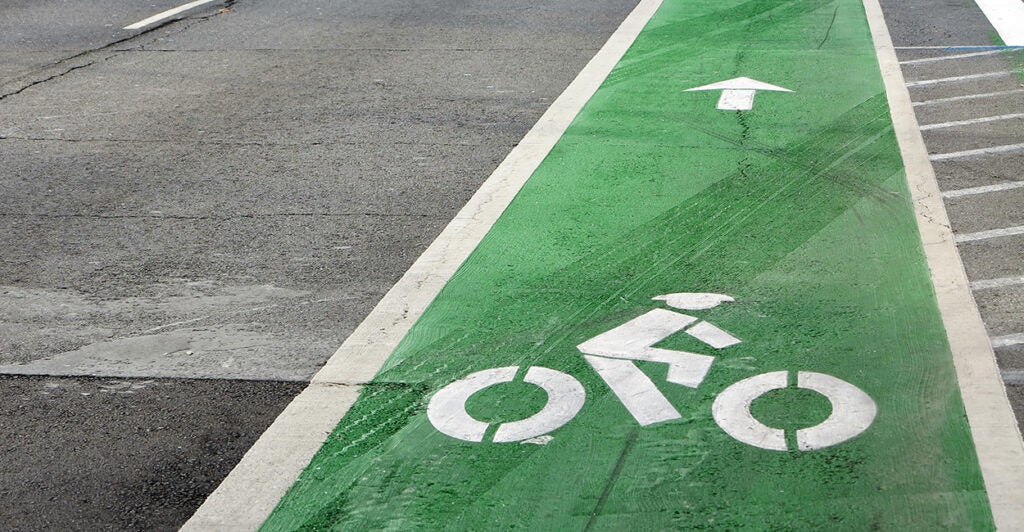America’s cities increasingly are acting to protect bicyclists as more of them are killed or injured in crashes with motorists.
The number of bicyclists killed or hurt hit a peak in 2021, when 966 died and another 42,000 were injured, according to the latest data available.
In light of such statistics, cities certainly should try to keep cyclists safe. But city officials harm cyclists when they approve bike lanes for unsafe areas, such as on truck routes or those regularly used by emergency vehicles.
Case in point: beautiful Petaluma, California, founded in 1858, where one might not expect a dangerous bike lane. Situated north of San Francisco in Sonoma County, the city boasts picturesque buildings that survived the 1906 earthquake and line the Petaluma River.
But the Petaluma City Council is considering building bike lanes along D Street, a designated truck route with a fire station. Sonoma County’s High Injury Network identifies D Street as a thoroughfare where some of the most severe injuries occur.
The proposed bike lane is unnecessary, since nearby B Street, which is not a truck route, already has dedicated bike lanes. The proposal, set to come to a City Council vote Monday, should be rejected on safety grounds.
Petaluma boasts that it is “Sonoma County’s gateway to wine country and the Pacific Ocean.” Tourists, unfamiliar with the area, rent bicycles and they won’t know that the D Street bike lane is close to trucks and emergency vehicles.
The city has a responsibility for the safety of residents and tourists that it spends funds to attract.
Crashes in areas such as D Street in Petaluma accounted for 85% of all cyclist deaths in 2021. Over 60% of those deaths happened when cyclists were biking along roads rather than at intersections.
One example of many: In 2022, State Department diplomat Sarah Langenkamp, who had recently returned from Ukraine, was killed in a bike lane on a major Maryland road. A flat-bed Volvo truck turned right into a parking lot and hit Langenkamp. Although it was daylight, the driver in his high cab didn’t see her on her bike.
In March 2020, an engineering and traffic survey conducted for Petaluma concluded that D Street has “an above-average collision rate.” It is clearly not a candidate for a bike lane.
Cycling can be unsafe even on quiet streets, and adding trucks compounds the danger. On residential streets such as D Street, it’s impossible to structure bike lanes without pedestrians stepping into the lane to cross the street and delivery vans stopping to drop off packages, blocking bike lane access.
Even when bike lanes are protected from car lanes with a line of parked cars or a physical barrier, cars and trucks make right or left turns across the lanes at intersections.
Jan Heine, editor-in-chief of Bicycle Quarterly, wrote over 10 years ago: “Any barrier that separates the cyclist visually from other traffic effectively hides the cyclist. This is counterproductive to safety.”
This would be far worse on a truck route, where truckers’ elevated positions create many blind spots.
The proposed D Street bike lane also would harm the community by eliminating 120 parking spaces used by homeowners and members of the Petaluma United Methodist Church.
The Rev. Robert Herrmann says he is concerned that elderly and handicapped congregants won’t have parking for access to Sunday worship or midweek activities, such as Alcoholics Anonymous meetings and quilting gatherings.
Neither would the proposed lane help the climate. Even if California eliminated all fossil fuels, global temperatures would decline by only 0.0068 degrees Celsius in 2050, according to the U.S. government’s standard climate policy impacts calculator, called the Model for the Assessment of Greenhouse Gas Induced Climate Change, or MAGICC.
Local and state officials throughout America should discourage bicyclists from using truck routes. And that’s why Petaluma should place bike lanes where fatalities and injuries will be minimized for residents and tourists alike.
